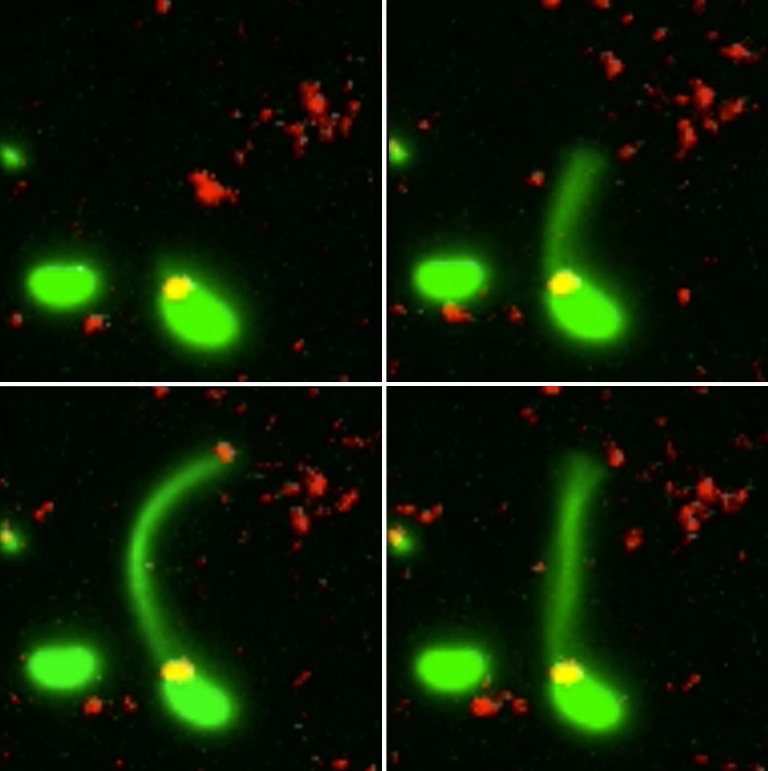
Clockwise from upper left: This series of four still images shows a pilus stretch out from a bacterium, in green, to catch a piece of DNA in the environment, in red. This is the first step in the DNA uptake process. Credit: Ankur Dalia, Indiana University
Researchers are using a new method to observe for the first time how bacteria “hooks” onto DNA to rapidly evolve new traits like antibiotic resistance.
Indiana University (IU) researchers recorded the first images of bacterial appendages called pili–which is about 10,000 times thinner than human hair- as they stretched out to catch DNA that is then incorporated into the bacteria’s own genome through a process called DNA uptake or horizontal gene transfer.
“Horizontal gene transfer is an important way that antibiotic resistance moves between bacterial species, but the process has never been observed before, since the structures involved are so incredibly small,” senior author Ankur Dalia, an assistant professor in the IU Bloomington College of Arts and Sciences’ Department of Biology, said in a statement. “It’s important to understand this process, since the more we understand about how bacteria share DNA, the better our chances are of thwarting it.”
In the study, the researchers examined Vibrio cholera—the microbe that causes cholera.
The scientists were able to “paint” both the pili and DNA fragments with special glow dyes and found that the pili act as microscopic “harpooners” that cast their line through pores in the cell’s wall to “spear” a stray piece of DNA at the very tip. The pili then “reels” the DNA into the bacterial cell through the same pore, which is so small that the DNA needs to fold in half to fit through the opening in the cell.
“It’s like threading a needle,” IU PhD student Courtney Ellison, who is first author on the study, said in a statement. “The size of the hole in the outer membrane is almost the exact width of a DNA helix bent in half, which is likely what is coming across. If there weren’t a pilus to guide it, the chance the DNA would hit the pore at just the right angle to pass into the cell is basically zero.”
According to the World Health Organization, antibiotic-resistant bacteria affect almost one million people annually, with nearly 490,000 people suffering from tuberculous.
The researchers now plan to examine how pili hook onto the DNA at the right location, especially since the protein involved in the process appears to interact with DNA in an entirely new way. They also plan to apply their pili labeling method to study other functions played by diverse bacterial structures.
“These are really versatile appendages,” Dalia said. “This method invented at IU is really opening up our basic understanding about a whole range of bacterial functions.”
The study was published in Nature Microbiology.




